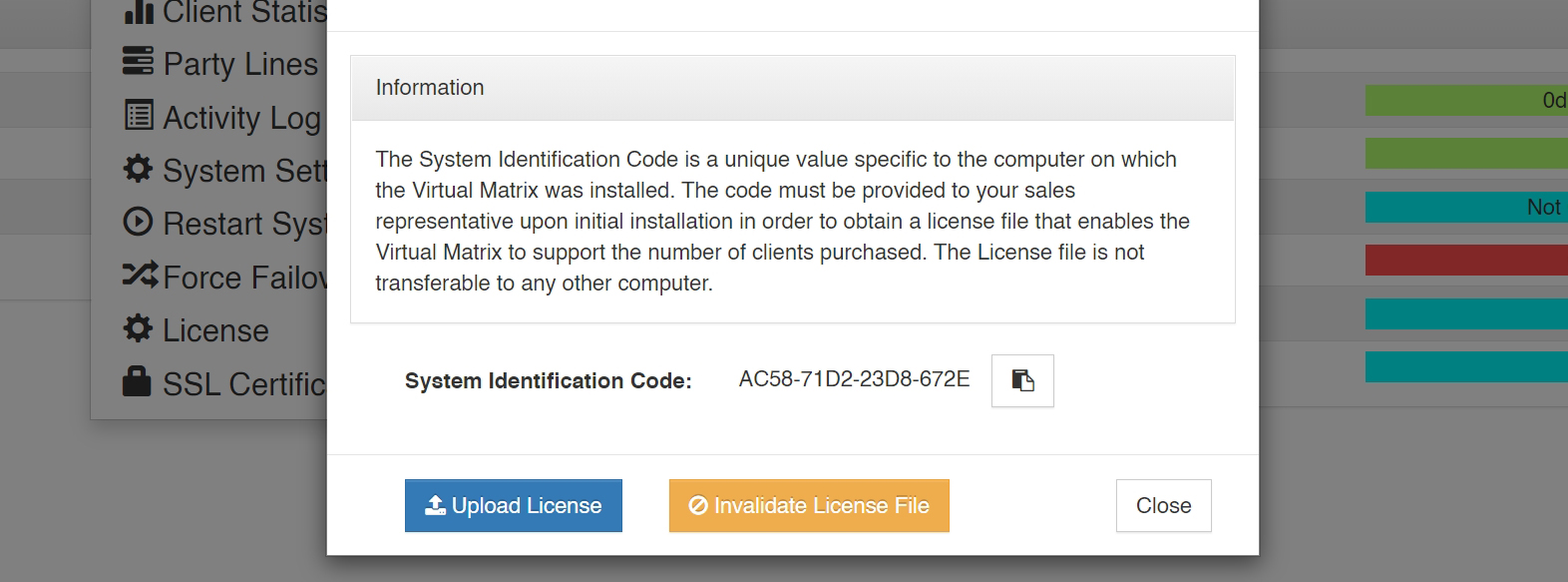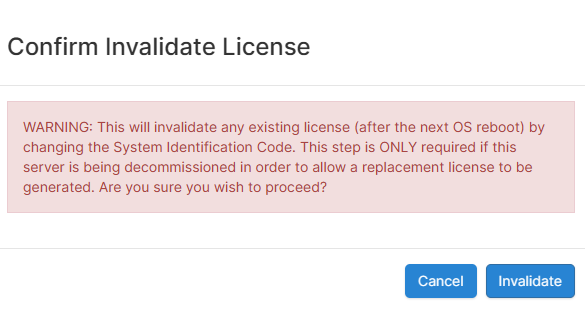Server Installation
Hardware Requirements
Operating System Requirements
The Telex RDC Server can be installed on virtually any modern Windows based
operating system however Windows 10 Professional x64 or Windows Server 2019 x64
are highly recommended.
Memory Requirements
The memory requirement for the Telex RDC Server are very minimal and system size does
not realistically need to be considered. It is recommended to use 8GB of memory
with any modern OS which will also provide sufficient resources for operation of the
Server.
Storage Requirements
The storage requirements for Telex RDC Server in the standard configuration are not
substantial but some incremental storage space is required for Activity/Debug Logs.
In the standard configuration, a minimum of a 128GB SSD is recommended although
a 256GB SSD is preferred. An SSD is specified only for reliability.
Network Requirements
Bandwidth Requirements
The network bandwidth requirements must be carefully analyzed to ensure proper
bandwidth is available at any point where multiple clients will share the same physical
connection point. The most obvious connection point where this is critical is at the
server where bandwidth requirements will be the sum of the requirements of every
possible client. The least obvious connection point where this is also important occurs
when multiple remote clients in one physical location need to access the server in
another physical location as the bandwidth requirements for the connection between
these two points will be the sum of the requirements for all remote clients.
To determine the bandwidth requirements it is necessary first to determine the network bandwidth utilization per client connection, which is indicated below for the various audio sample rates that can be configured.
Telex RDC:
| Audio Sample Rate | Data Rate (Kbps) |
|---|---|
| 48 KHz | 200 |
To determine server bandwidth requirements, first determine maximum potential bandwidth utilization by multiplying the number of clients (users and devices interfaced) by the Data Rate associated with appropriate Audio Sample Rate for the configured Audio Time Slice per packet. The product is the bandwidth required if every client were to receive audio simultaneously (maximum download bandwidth requirement) and also the bandwidth required if every client were to send audio simultaneously (maximum upload bandwidth requirement). In a typical system, the maximum download bandwidth requirement must be allocated for, as several system functions can require simultaneous audio transmission to all clients. The maximum upload bandwidth requirement however will realistically never be achieved as it is not feasible that all audio sources in a system would be active simultaneously since the result would be inaudible. As such the upload bandwidth to be allocated must be made based on the estimation of the number of simultaneous active audio sources noting that inactive audio sources will have no bandwidth requirements.
Firewall Requirements
Telex RDC requires certain ports to be traversable through firewalls to allow the various components to connect. Factors such as the network location of the hardware and of the RDC clients that will connect to the Server as well as where those connections originate will need to be considered. For the initial configuration, it is recommended to completely disable the Windows Firewall. The diagram and the chart below indicate which ports are required for all components.
The IP-224, the C-Soft Console and the Server Secondary Server will generally coexist on the same private network segment as the Server Primary as as such there may not be any firewalls between.
The RDC clients are most likely to exist in the public network outside of the private network. In such case there will be a firewall to traverse. By default, the clients establish their initial connection to the server on the standard HTTP/HTTPS ports of 80/443. Note that the HTTP port is optional as it sole purpose is to redirect any HTTP request to an HTTPS request. In addition to the standard HTTPS port, a default WSS port of 444 is also required to complete the connection. As forwarding the standard HTTP/HTTPS ports may not be possible, it may be required to change the default HTTP/HTTPS ports in the RDC Administration → System Settings dialog. Note that the WSS port will always be 1 greater than the HTTPS port. If the HTTPS ports is changed, all clients must then append the new port number to the Server Host Name (eg 100.100.100.100:8443).

| Port or Port Range | Protocol | Description |
|---|---|---|
| 80 | TCP (HTTP) | RDC Administration and Telex RDC App data (Unsecure) |
| 443 | TCP (HTTPS) | RDC Administration and Telex RDC App data (Secure) |
| 444 | TCP (WSS) | Telex RDC App Signaling data (Secure) |
| 1001 | TCP (IOIP) | Telex RDC Server Failover data |
| 49152 to 65535 | UDP (WebRTC) | Telex RDC App WebRTC Audio (see ‘WebRTC Audio Connection’ section) |
| 1054 to 65535 | UDP (Multicast) | Connection to C-Soft Console |
| 1054 to 65535 | UDP (Multicast) | Connection to IP-224 |
The C-Soft Console and IP-224 use the UDP multicast address range 224.0.0.0 to 239.255.255.255.
WebRTC Audio Connection
When the client logs into the server, the client and the server work together determine the network path for the audio connection. If the client and server are both located on the same private network, the audio connection is straight forward and a connection is made directly between the client and server. If the server is located on a private network and the client is on the public Internet or the client is on separate private network that is also connected to the public internet, the audio connection is more complex as the connection must be established via the firewall(s) of the private network(s). In 80% of network installations, this is all handled automatically and transparently such that the audio connection is routed directly to and through the firewall(s) of the private network(s) without further considerations necessary. However, in 20% of the network installations, typically on highly secure corporate networks using Symmetric NATs, the firewall restrictions are such that the audio connection cannot be routed directly to and through the firewall of the private network. In this situation, the audio connection must be routed through a relay server located in the public Internet. This relay server is referred to as a “TURN” server which stands for ‘Traversal Using Relays around NAT’. If a TURN server is required, please refer to the ‘TURN Server Provisioning’ section for setup and configuration information. If provisioning a TURN server is not feasible, a TURN server can be provided as a service by a 3rd party partner. Using a TURN server is completely secure as all WebRTC audio packets must be encrypted using TLS (Transport Layer Security) by definition and can only be decrypted by the intended recipient.
Software Installation
Download Telex RDC Server from our downloads page and unzip the installer.
Run the installer and follow the prompts. You will need to accept Telex License Agreement to install the software. During the installation process you will be asked if you want to install the Telex RDC Server to run as a service or application. Servers should run Telex RDC as a service.
Licensing
To license your Telex RDC System you need to acquire a valid license file from Telex. To do so you must provide Telex with your unique ‘System Identification Code’ generated automatically when you install the Telex RDC Server. The ‘System Identification Code’ is a unique value specific to the computer on which the Server was installed and is not transferable to any other computer. If the server you are running the Telex RDC Server on has dual network cards make sure the primary NIC to be used is select as the Primary Server IP Address in the System Settings before sending the system identification code as it is dependent on the network card being used.
To generate a license for a new Telex RDC Server installation:

1) Log into the RDC Administration and select License from the System tab at the top of the screen.

2) Make a note of the displayed System Identification Code.
3) Send the System Identification Code to your Telex RDC sales representative who will use that code to generate the license.
4) Upon receiving the license from your Telex RDC sales representative, click 'Upload License' and chose the provided license file.
To transfer a license from an existing Telex RDC Server installation to a new computer in the case of computer upgrade or replacement:
1) Log into the RDC Administration and select License from the System tab at the top of the screen.
2) Make a note of the displayed existing System Identification Code.

3) Click 'Invalidate License' and after reading the invalidation WARNING dialog, click 'Invalidate'.
4) Make a note of the displayed Invalidation Code.
5) Send both the System Identification Code and the Invalidation Code to your Telex RDC sales representative.